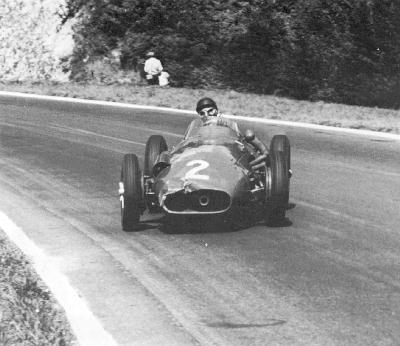This might help people confused about slip angles and contact patch deflection. From a high level (macroscopic) view of tires, there's two features that are important here: the effective contact patch friction and the carcass/structural stiffness of the tire. While we argue about sliding versus drifting semantics, we should realize that it's possible to create a tire that can exploit sliding around or operating at high slip angles. I like to work in extremes so I'll imagine a tire (just a single tire, no vehicle/suspension) with infinite contact patch friction (we're ignoring all the complex mechanisms that create this friction). Obviously this contact patch will always be in a state of static friction and will never slide. This doesn't mean the tire can produce 'grip' yet. Its structural stiffness will determine how the tire deflects/distorts under the presence of friction forces from the contact patch, and therefore it determines the slip angle that the tire will operate at. If the structural stiffness is zero then there is no grip, the tire will deflect forever and it will not change its overall velocity even though its heading (direction of the wheel plane) is changing resulting in a 'slip angle'. If the structural stiffness is infinite (and we still have infinite patch friction) then there will be no deflection/distortion and a slip angle of zero: the tire velocity matches its heading exactly wherever it points. Similarly, if we have zero contact patch friction then the tire will slide with no deflection (no friction means no deflection/distortion regardless of structural stiffness). There is still a slip angle, according to the definition, since tire velocity will not follow its heading, but there is no grip. On a real tire, these are heavily coupled as high structural stiffness increases the shear stress at the contact patch and reduces patch friction (less static, more sliding). Obviously, a real tire has numerous compromises made, but you get the idea. The concept of a 'cornering stiffness' lumps these two effects together.
Older F1 tires certainly didn't have the levels of contact patch friction we see today: 50 years of chemical and material evolution will do that. Structural stiffness was way lower as well, as there have been significant advances in overall stiffness without harming friction or durability (or any of the other important factors a tire must deal with). So I think it's probably both effects that cause the large yaw and side-slip angles we saw in older racecars, and I also think it's probably pretty tough to the the effects apart from looking at a picture.
- Login or Register
No account yet? Sign up


